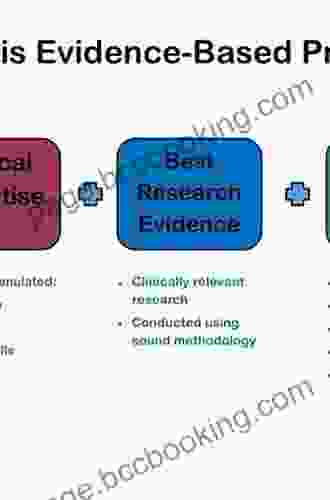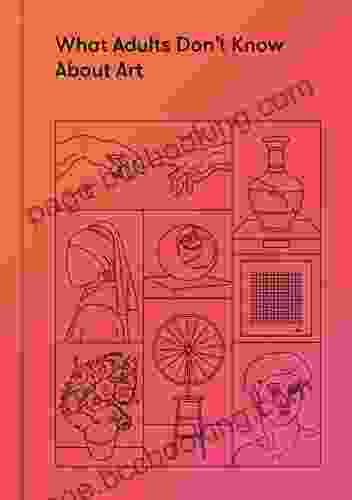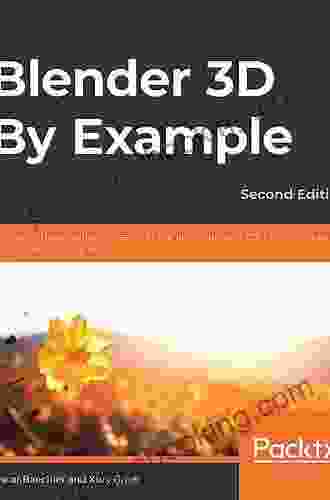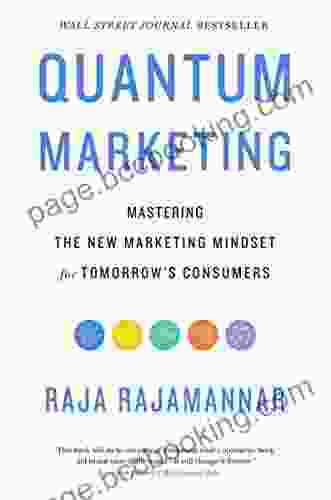Unlocking the Power of Evidence: A Comprehensive Guide to Evidence-Based Practice for Nurses

In the ever-evolving landscape of healthcare, nurses play a pivotal role in shaping patient outcomes. Evidence-Based Practice (EBP) has emerged as a cornerstone of modern nursing, empowering nurses to make informed decisions based on the latest scientific evidence. This article delves into the world of EBP, exploring its significance, benefits, and the practical steps nurses can take to integrate it into their practice.
What is Evidence-Based Practice (EBP)?
EBP is a systematic approach to healthcare that involves using the best available evidence to guide decisions about patient care. It combines clinical expertise with research findings to provide a solid foundation for nursing practice. By incorporating EBP, nurses can ensure that their interventions are supported by scientific evidence, leading to optimal patient outcomes.
4.6 out of 5
| Language | : | English |
| File size | : | 11122 KB |
| Text-to-Speech | : | Enabled |
| Enhanced typesetting | : | Enabled |
| Print length | : | 1123 pages |
Benefits of EBP for Nurses and Patients
The adoption of EBP offers numerous benefits for both nurses and patients. For nurses, EBP:
- Enhances clinical decision-making by providing a structured framework for evaluating evidence.
- Improves patient outcomes by ensuring that interventions are based on proven effectiveness.
- Promotes professional development by encouraging nurses to stay abreast of the latest research.
- Supports evidence-informed advocacy for patients and their families.
For patients, EBP:
- Ensures that they receive the most appropriate and effective care based on scientific evidence.
- Improves health outcomes and minimizes unnecessary interventions.
- Empowers patients to make informed decisions about their healthcare.
- Strengthens the nurse-patient relationship by fostering trust and collaboration.
Steps for Implementing EBP in Nursing Practice
Integrating EBP into nursing practice requires a systematic approach. Nurses can follow these steps:
- Identify a clinical problem: Define a specific patient care issue or concern that you want to address with EBP.
- Ask a clinical question: Formulate a focused question that guides your search for evidence.
- Search for evidence: Utilize reputable databases and resources to gather the best available evidence related to your question.
- Appraise the evidence: Critically evaluate the strength and quality of the evidence to determine its relevance and applicability.
- Integrate the evidence: Incorporate the evidence into your nursing practice, modifying interventions as necessary.
- Evaluate the outcomes: Monitor and assess the impact of the evidence-based interventions on patient outcomes.
Resources for EBP in Nursing
Nurses have access to a wealth of resources to support their EBP endeavors:
- Databases: CINAHL, PubMed, Cochrane Library
- Organizations: Joanna Briggs Institute, Sigma Theta Tau International
- Educational Institutions: Universities and colleges offering EBP courses and workshops
- Mentors: Experienced nurses who can guide and support EBP implementation
Evidence-Based Practice (EBP) is an essential component of modern nursing. By embracing EBP, nurses can make informed decisions, improve patient outcomes, and enhance their professional development. With the practical steps and resources outlined in this article, nurses can effectively integrate EBP into their practice, unlocking its transformative power and shaping the future of healthcare.
4.6 out of 5
| Language | : | English |
| File size | : | 11122 KB |
| Text-to-Speech | : | Enabled |
| Enhanced typesetting | : | Enabled |
| Print length | : | 1123 pages |
Do you want to contribute by writing guest posts on this blog?
Please contact us and send us a resume of previous articles that you have written.
 Book
Book Novel
Novel Page
Page Chapter
Chapter Text
Text Story
Story Genre
Genre Reader
Reader Library
Library Paperback
Paperback E-book
E-book Magazine
Magazine Newspaper
Newspaper Paragraph
Paragraph Sentence
Sentence Bookmark
Bookmark Shelf
Shelf Glossary
Glossary Bibliography
Bibliography Foreword
Foreword Preface
Preface Synopsis
Synopsis Annotation
Annotation Footnote
Footnote Manuscript
Manuscript Scroll
Scroll Codex
Codex Tome
Tome Bestseller
Bestseller Classics
Classics Library card
Library card Narrative
Narrative Biography
Biography Autobiography
Autobiography Memoir
Memoir Reference
Reference Encyclopedia
Encyclopedia Tony Hefner
Tony Hefner Sunil Khilnani
Sunil Khilnani Tommy James
Tommy James Robin Yardi
Robin Yardi Peter Andreas
Peter Andreas Paul Temporal
Paul Temporal Polly Mckenna Cress
Polly Mckenna Cress Nick Santonastasso
Nick Santonastasso Parth Detroja
Parth Detroja William A Hart
William A Hart Peter H Diamandis
Peter H Diamandis Steve Reifenberg
Steve Reifenberg Tish Rabe
Tish Rabe Richard Henry Dana
Richard Henry Dana Vladimir Petrov
Vladimir Petrov Paul Clayton
Paul Clayton Paige Wolf
Paige Wolf Yuu Minaduki
Yuu Minaduki Sylvia Yordanova
Sylvia Yordanova Peter A Koenig
Peter A Koenig
Light bulbAdvertise smarter! Our strategic ad space ensures maximum exposure. Reserve your spot today!

 Houston PowellThe Complete Silver Fleet Series: An Unforgettable Voyage into a World of...
Houston PowellThe Complete Silver Fleet Series: An Unforgettable Voyage into a World of...
 Julio CortázarUnveiling the Rich History and Culture of the Dakota, Lakota, and Nakota...
Julio CortázarUnveiling the Rich History and Culture of the Dakota, Lakota, and Nakota...
 Chase MorrisDiary of Minecraft Skeleton Steve: The Noob Years Season Episode Book 10 – A...
Chase MorrisDiary of Minecraft Skeleton Steve: The Noob Years Season Episode Book 10 – A... Simon MitchellFollow ·5.9k
Simon MitchellFollow ·5.9k Italo CalvinoFollow ·9.7k
Italo CalvinoFollow ·9.7k Dominic SimmonsFollow ·5.9k
Dominic SimmonsFollow ·5.9k Jamie BellFollow ·16.2k
Jamie BellFollow ·16.2k Hugh ReedFollow ·6.5k
Hugh ReedFollow ·6.5k Alexander BlairFollow ·4.4k
Alexander BlairFollow ·4.4k Charles DickensFollow ·14.2k
Charles DickensFollow ·14.2k Gabriel Garcia MarquezFollow ·16.9k
Gabriel Garcia MarquezFollow ·16.9k
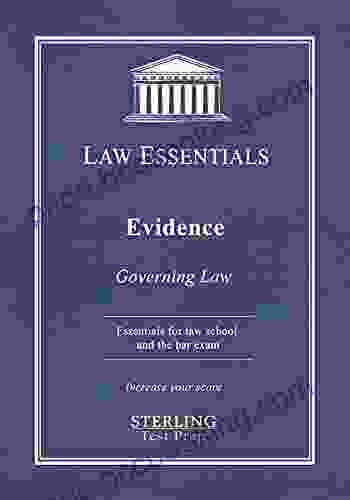
 Marvin Hayes
Marvin HayesGoverning Law for Law School and Bar Exam Prep: Your...
Unlock the Secrets of...
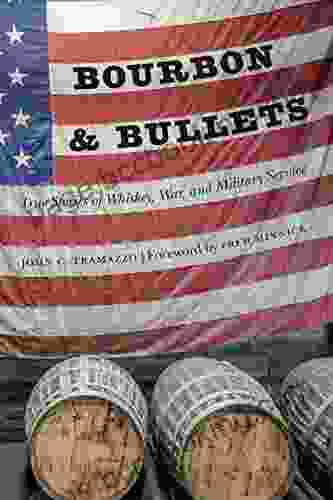
 Sidney Cox
Sidney CoxUnveiling the Epic Tales of Whiskey, War, and Military...
In the tapestry of history,...
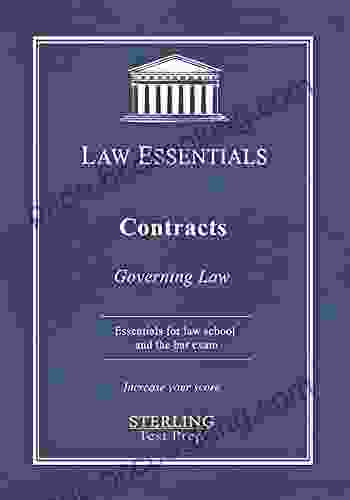
 Victor Turner
Victor TurnerGoverning Law for Law School and Bar Exam Prep: The...
What is Governing...

 Robert Browning
Robert BrowningSterling Test Prep MCAT General Chemistry Practice...
: Embark on Your MCAT General Chemistry...
4.6 out of 5
| Language | : | English |
| File size | : | 11122 KB |
| Text-to-Speech | : | Enabled |
| Enhanced typesetting | : | Enabled |
| Print length | : | 1123 pages |


